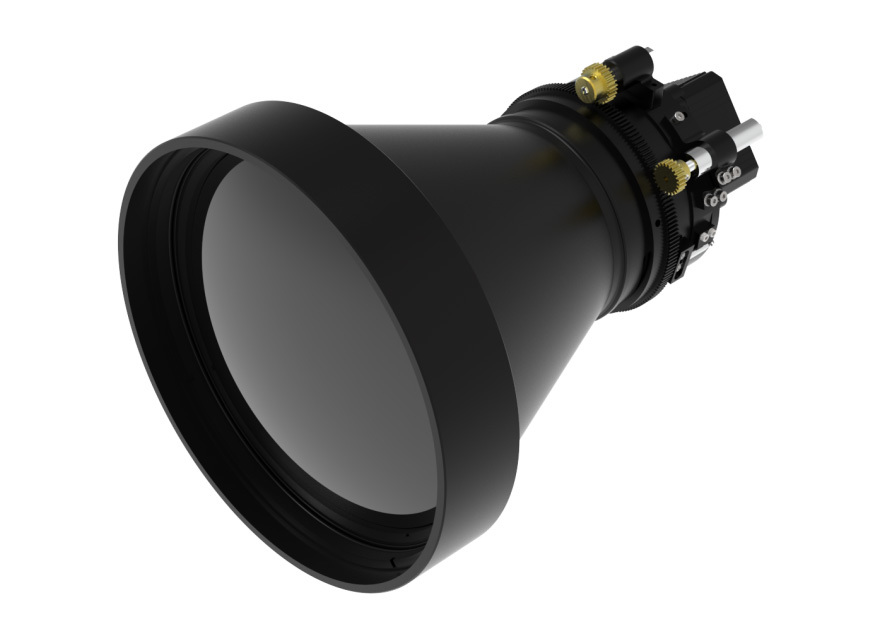Return
Thermal Imaging Modules: A Comprehensive Guide for Beginners
Nov 25,2025

Thermal Imaging Modules: A Comprehensive Guide for Beginners
Table of Contents
1. Introduction to Thermal Imaging Modules
2. What is Thermal Imaging Technology?
3. How Thermal Imaging Modules Work
3.1 Key Components of Thermal Imaging Modules
3.2 Types of Thermal Imaging Sensors
4. Applications of Thermal Imaging Modules
4.1 Industrial Applications
4.2 Medical Applications
4.3 Security and Surveillance
5. Benefits of Using Thermal Imaging Modules
6. Choosing the Right Thermal Imaging Module
6.1 Factors to Consider
6.2 Popular Brands and Models
7. Future Trends in Thermal Imaging Technology
8. Frequently Asked Questions (FAQs)
9. Conclusion
1. Introduction to Thermal Imaging Modules
Thermal imaging modules are transformative tools that allow users to visualize temperature differences in a given environment. Whether you're a novice researcher or a seasoned professional, understanding thermal imaging technology can provide you with valuable insights across various fields. This guide aims to equip you with comprehensive knowledge about thermal imaging modules, including their principles, functionalities, applications, and trends.
2. What is Thermal Imaging Technology?
Thermal imaging technology utilizes infrared radiation to create visual images based on temperature variations. Unlike conventional cameras that capture light within the visible spectrum, thermal imaging devices detect heat emitted by objects, making them invaluable in numerous applications. By translating thermal energy into visible images, these systems help users identify anomalies, monitor performance, and enhance safety.
3. How Thermal Imaging Modules Work
Understanding the workings of thermal imaging modules is crucial for appreciating their capabilities. These modules convert infrared radiation into electrical signals, which are then processed to generate thermal images.
3.1 Key Components of Thermal Imaging Modules
The core components of thermal imaging modules include:
- **Infrared Sensors:** These sensors detect infrared radiation and convert it into electrical signals.
- **Optics:** Lenses focus the infrared radiation onto the sensor.
- **Signal Processing Unit:** This component processes raw data from the sensor and translates it into images.
- **Display:** The final image is displayed on a screen, allowing users to analyze thermal patterns.
Each component plays a vital role in ensuring the accuracy and effectiveness of thermal imaging systems.
3.2 Types of Thermal Imaging Sensors
There are primarily two types of thermal imaging sensors:
- **Uncooled Sensors:** These sensors operate at ambient temperatures and are widely used in lower-cost applications. They offer fast response times and durability.
- **Cooled Sensors:** These sensors require cooling systems to enhance sensitivity, making them suitable for high-performance applications. Although more expensive, cooled sensors deliver superior image quality and thermal sensitivity.
4. Applications of Thermal Imaging Modules
The versatility of thermal imaging modules enables their application across diverse industries.
4.1 Industrial Applications
In industrial settings, thermal imaging modules are utilized for predictive maintenance, allowing companies to detect equipment malfunctions before they lead to failures. They can identify overheating components, facilitating timely interventions that save costs and prevent downtime.
4.2 Medical Applications
In healthcare, thermal imaging is increasingly adopted for non-invasive diagnostics. Medical professionals use thermal imaging to detect conditions such as inflammation, circulatory issues, and even tumors, enhancing patient care and treatment efficacy.
4.3 Security and Surveillance
In security applications, thermal imaging modules provide night vision capabilities. They can detect intruders in low-light environments, making them essential for border security, military operations, and home surveillance systems.
5. Benefits of Using Thermal Imaging Modules
Thermal imaging modules offer numerous advantages:
- **Non-Contact Measurement:** They measure temperature without direct contact, making them safe for various applications.
- **Speed and Efficiency:** Thermal imaging provides immediate results, enabling quick assessments.
- **Versatility:** They can be used in many fields, from industrial inspections to medical diagnostics.
- **Enhanced Safety:** By detecting potential hazards, thermal imaging helps improve safety in various environments.
6. Choosing the Right Thermal Imaging Module
Selecting the appropriate thermal imaging module depends on specific needs and requirements.
6.1 Factors to Consider
When choosing a thermal imaging module, consider the following factors:
- **Resolution:** Higher resolutions provide clearer images, which are essential for detailed analysis.
- **Temperature Range:** Ensure the module can operate within the required temperature parameters.
- **Sensitivity:** Look for modules with high thermal sensitivity for more accurate readings.
- **Size and Portability:** Depending on the application, consider the module's weight and size.
6.2 Popular Brands and Models
Several reputable brands offer high-quality thermal imaging modules. Some of the leading names include:
- **Flir Systems:** Known for a wide range of thermal imaging cameras suitable for various industries.
- **Seek Thermal:** Offers compact and affordable thermal imaging solutions.
- **Testo:** Provides advanced thermal cameras designed for professional use in industrial applications.
7. Future Trends in Thermal Imaging Technology
The future of thermal imaging technology is promising, with advancements expected in various areas:
- **Integration with AI:** The incorporation of artificial intelligence will enhance image analysis and anomaly detection, leading to smarter monitoring systems.
- **Smartphone Compatibility:** As thermal imaging becomes more accessible, integration with smartphones will allow users to capture thermal images easily.
- **Increased Sensitivity and Resolution:** Continuous improvements in sensor technology will result in higher resolution images and greater sensitivity.
These trends indicate a bright future for thermal imaging modules, making them more efficient and user-friendly.
8. Frequently Asked Questions (FAQs)
What is the difference between thermal imaging and night vision?
Thermal imaging detects heat emitted by objects, while night vision amplifies available light. Thermal imaging is effective in complete darkness, whereas night vision requires some light to function.
Are thermal imaging cameras expensive?
Thermal imaging cameras vary in price based on features and specifications. Basic models can start at a few hundred dollars, while advanced systems can exceed several thousand dollars.
Can thermal imaging be used in construction?
Yes, thermal imaging is widely used in construction for detecting heat loss, moisture intrusion, and electrical issues, helping to improve energy efficiency and safety.
Is thermal imaging safe?
Yes, thermal imaging is a non-invasive technology that poses no health risks to users or subjects being imaged.
How accurate are thermal imaging measurements?
Thermal imaging measurements can be highly accurate, but the precision depends on factors such as environmental conditions and the quality of the thermal camera used.
9. Conclusion
Thermal imaging modules represent a vital technology with applications spanning multiple sectors, including industrial, medical, and security domains. Understanding the principles and functionalities of thermal imaging can empower users to leverage its benefits effectively. As advancements continue to shape this technology's future, it is clear that thermal imaging will play an increasingly significant role in enhancing safety, efficiency, and insight across various industries. Embrace the power of thermal imaging modules and unlock new possibilities in your field.
Previous Page:
Contact Us
EMAIL: Guojin@settall.com
No. 8, 14th Building, Zone 7, Headquarters Base, West Outer Ring Road, Fengtai District, Beijing



